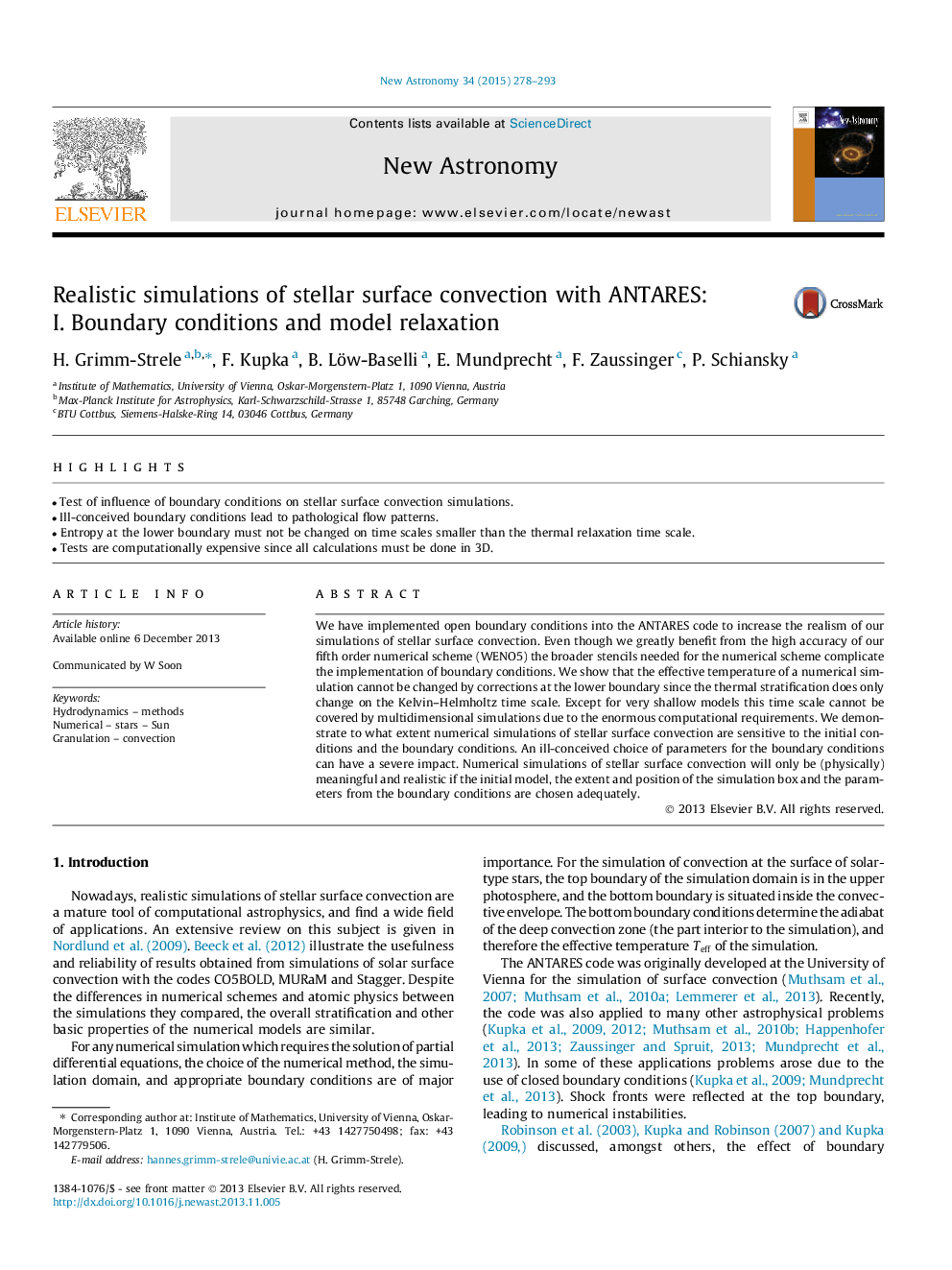| Article ID | Journal | Published Year | Pages | File Type |
|---|---|---|---|---|
| 1778987 | New Astronomy | 2015 | 16 Pages |
•Test of influence of boundary conditions on stellar surface convection simulations.•Ill-conceived boundary conditions lead to pathological flow patterns.•Entropy at the lower boundary must not be changed on time scales smaller than the thermal relaxation time scale.•Tests are computationally expensive since all calculations must be done in 3D.
We have implemented open boundary conditions into the ANTARES code to increase the realism of our simulations of stellar surface convection. Even though we greatly benefit from the high accuracy of our fifth order numerical scheme (WENO5) the broader stencils needed for the numerical scheme complicate the implementation of boundary conditions. We show that the effective temperature of a numerical simulation cannot be changed by corrections at the lower boundary since the thermal stratification does only change on the Kelvin–Helmholtz time scale. Except for very shallow models this time scale cannot be covered by multidimensional simulations due to the enormous computational requirements. We demonstrate to what extent numerical simulations of stellar surface convection are sensitive to the initial conditions and the boundary conditions. An ill-conceived choice of parameters for the boundary conditions can have a severe impact. Numerical simulations of stellar surface convection will only be (physically) meaningful and realistic if the initial model, the extent and position of the simulation box and the parameters from the boundary conditions are chosen adequately.
